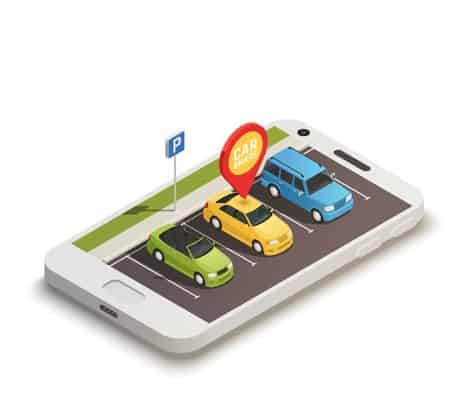We’ve seen technology both creating and disrupting industries galore over the last few decades, and when it comes to the automotive industry, things are no different. One particular area where technology has really been causing a stir is in carsharing.
While once, if you needed access to a vehicle for a short amount of time you’d beg your family members or friends to loan you theirs, or you’d have to pay a significant amount to rent a car for a day or longer, now there are carsharing services popping up everywhere which handily connect car owners (whether individuals, dealerships, car rental agencies or other organizations) with drivers directly and effectively.
Read on for the lowdown on how you could take advantage of this key trend today and into the future.
What Is Carsharing?
Carsharing is a particular type of car rental system. This option differs from traditional car hire programs in that it makes vehicles available for a short period of time, such as an hour or two. The idea behind carsharing is that it enables consumers to more affordably use a vehicle at the times they need one, for a specific outing, without having to worry about expenses like annual insurance and maintenance or repairs.
At the same time, it provides car owners with a means of making some money off their vehicle when they’re not using it themselves. People who participate in carsharing programs can get access to vehicles parked close by their location.
How Does Carsharing Work?
Carsharing programs all work slightly differently, depending on the company and its systems, but typically consumers choose a service from those available to them (in some areas there might only be one or two options), based on things like nearby car availability, fees and plans, terms and conditions and so on. Generally customers have to be at least 21 years old to participate in a program and have a valid driver’s license with a clear record.
To sign up, people are asked to fill out an online registration form and select a plan. These plans usually revolve around the amount of hours they’d like access to a vehicle for each month and/or the number of miles they need to drive. Often gas costs and driver insurance fees are included in the fee structure.
After signup, a client uses the carsharing firm’s website and/or app to check out a map of their location. This will let them see where available cars are currently parked. (Some companies instead just give customers a list of one or two of the closest cars.) From here, users reserve vehicles for their preferred times.
 Next, customers make their way to the car they’ve chosen and use their membership card, with its electronic chip, to unlock the vehicle’s door. Alternatively, if this tech isn’t used, companies may have an app for the job or else send instructions on where to find a hidden key, such as in a nearby lockbox. Usually, vehicles must be returned to the same space they’re collected from, although one-way usage is sometimes an option.
Next, customers make their way to the car they’ve chosen and use their membership card, with its electronic chip, to unlock the vehicle’s door. Alternatively, if this tech isn’t used, companies may have an app for the job or else send instructions on where to find a hidden key, such as in a nearby lockbox. Usually, vehicles must be returned to the same space they’re collected from, although one-way usage is sometimes an option.
Today, there are numerous carsharing services on the market. There are specific businesses which only deal in the arena, plus there are many car brands entering the field. In addition, because of the creation of easy-to-use tech platforms, there are services which enable many individuals to share out their car to strangers, simply by signing up to a relevant program.
There are also carsharing fleet management programs for corporations, rental companies sharing their cars during quiet periods, tourism operators providing car services for people on vacation and universities establishing carsharing programs for their students.
The Benefits of Carsharing
The benefits of carsharing are varied and help different stakeholders. For instance, for consumers, carsharing means they don’t need to have their own car and the many expenses that come with owning one and can instead use a vehicle only on the occasional times they need one. Carsharing is also helpful for customers who want to get access to a car close by, rather than having to make a long trek out to an airport or other far-away car rental agency depot. Plus, with carsharing, people also get to try out all sorts of different makes and models.
Businesses have reasons to get into carsharing, too. Rental companies and car manufacturers, for example, can utilize fleet multiservice strategies to bring in extra revenue and cater more effectively to their current customers.
Carsharing is beneficial for the environment, too. It means fewer cars on the road and fewer parts required for repairs. Fewer cars also means reduced air and noise pollution and less gas consumed. In addition, governments don’t need to get rid of so many urban green spaces to put in parking infrastructure or to clear trees for road expansion.

